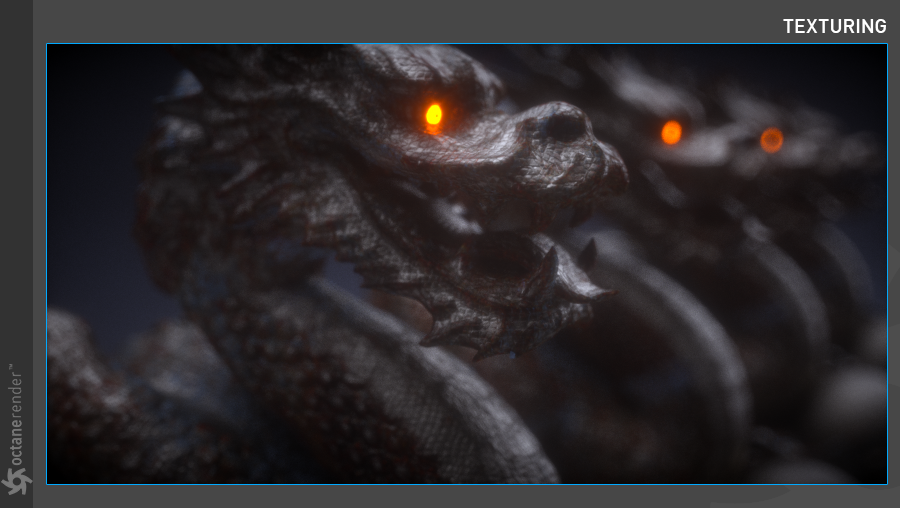Texturing Your Creation
In most cases, the materials that you create will have a heavy reliance on image textures and procedural (generated) textures. These textures may be featured front and center, such as a Diffuse texture, or used to drive aspects of the material, such as a normal map, roughness map, emission map and so on. Quite often, you will create layered materials using textures as masks between layers, or to blend between Mix or Composite materials. As you will see throughout this topic, OctaneRender® offers many different tools to work with textures. Transform and projection nodes will help you to position, scale and place your textures, even if your object does not contain UV coordinates (though, in some cases, you will need them.) You can color correct, composite, build up layers of gunk and grime, fingerprints, and more.
在大多数情况下,您创建的材质将严重依赖于图像纹理和程序(生成)纹理。这些纹理可能是前面和中心的特色,如漫反射纹理,或用于驱动材质的方面,如法线贴图,粗糙度贴图,发射贴图等。很多时候,你会使用纹理作为图层之间的蒙版来创建分层材质,或者在 Mix 或 Composite 材质之间混合。正如您将在本主题中看到的,OctaneRender 提供了许多不同的工具来处理纹理。变换和投影节点将帮助您定位、缩放和放置纹理,即使您的对象不包含 UV 坐标(尽管在某些情况下,您将需要它们)您可以颜色校正,合成,建立层的粘性和污垢,指纹,等等。
 .
.

